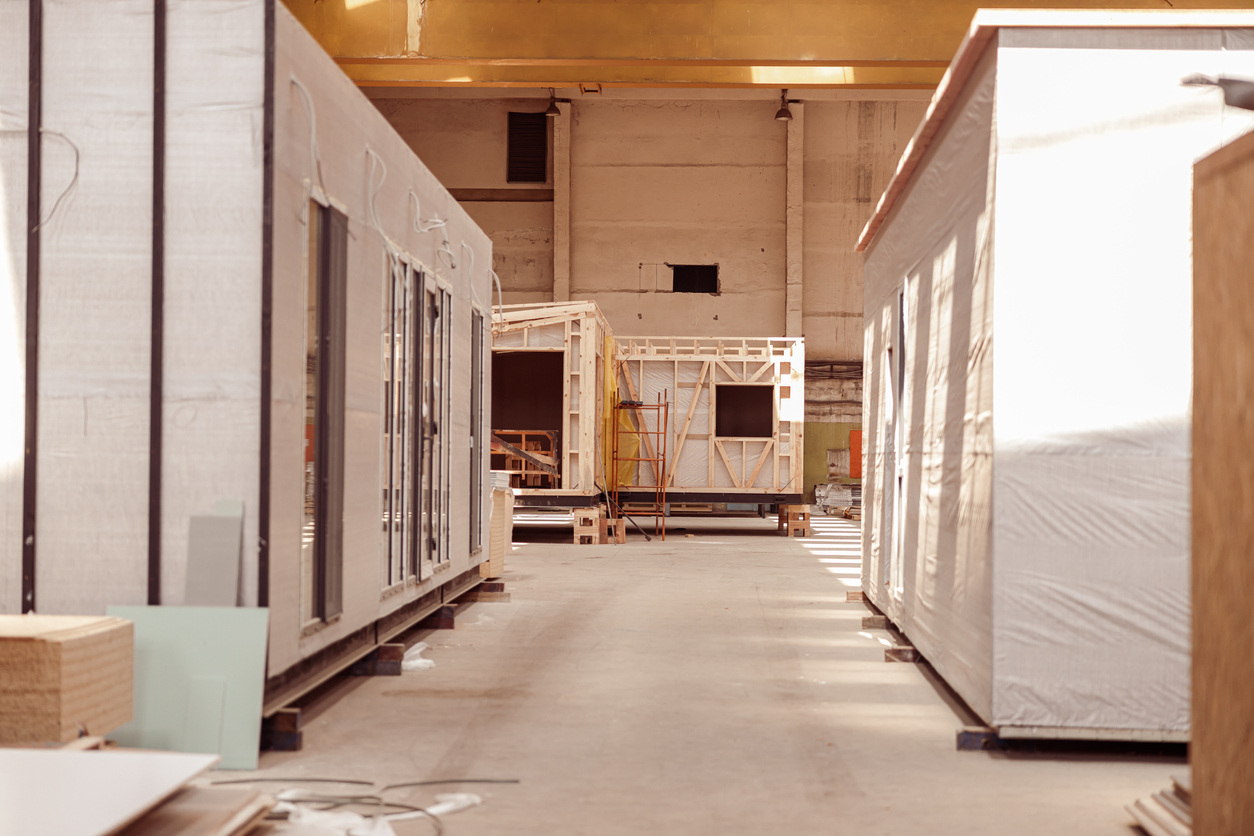
Share this Article     | Summary: In this article, we examine three companies that are at the forefront in creating unique applications for modular construction.
 These offsite modular construction companies are propelling the industry forward with their innovative designs and techniquesOffsite construction is a diverse, dynamic industry. In addition to homes and large-scale residential buildings, builders are leveraging offsite modular construction to build everything from schools to emergency relief buildings to data centers. Dealing in High Stakes Freight™ exclusively, we have the opportunity to work with an impressive range of modular builders who need help expertly transporting their mods, pods and panels. And, since we love showing off the impressive work our clients do, we wanted to showcase a few who are doing something unique. Let’s take a dive into standouts in the offsite modular construction industry: EXTREME Modular Buildings, Modica and Azure Printed Homes. 1) EXTREME Modular BuildingsThis Canadian company is creating a new standard for heavy-duty, modular buildings. Founded in the 1990s, EXTREME Modular Buildings has seen the offsite modular construction industry grow and evolve, carving its own niche along the way. Conventional modular solutions use wood or lighter steel frames that are unsuitable for more rugged commercial applications. So, EXTREME designs uniquely strong modular systems that can withstand the toughest conditions. Today, EXTREME primarily builds firehouses, police and ambulance stations, and industrial buildings across North America. These are the largest, most durable, heavy-duty mods in the industry — individual EXTREME modules can be up to twenty feet tall, sixty feet long and twenty-eight feet wide! How they do itEXTREME Modular Buildings creates modular systems that are safe, versatile and totally capable thanks to a non-combustible structure certified for high snow loads, hurricane wind velocities and seismic events. The Generation 4 EXTREME Modular buildings are able to withstand these conditions thanks to an extremely durable system that incorporates exterior sheet metal cladding over polyurethane insulation, structural aluminum and high-strength steel. “We guarantee they will meet all local, state and national building, fire and energy codes,” EXTREME Modular Buildings writes on their website. Unlike lighter, conventional modular structures that are typically limited to the residential or hospitality sectors, EXTREME Modular Buildings’ larger structural steel framed modules are ideal for these first-response teams that need to serve their communities no matter the disaster or situation. Certified for seismic zones and hurricane wind zones, these modular construction buildings are estimated to last 50 years. 2) MODICAWith a vision of a world where anyone can make anything anywhere, MODICA uses offsite modular construction to build smart factories and collaborative workspaces wherever they need to be. Leading the industry as the very first Factories-as-a-Service provider, MODICA’s Microfab family of technologies links digital manufacturing processes with ‘IoT-Inherent’ monitoring suites, flexible form factories, and intelligent robotics. How they do itMODICA builds machine tools, factory-automation equipment, and human workspaces that allow manufacturers to reformat and containerize manufacturing processes. MODICA’s modular construction factory spaces can be arranged and stacked to make best use of available footprints and clear spans, providing the kind of customization and flexibility you just can’t get with traditional builds. The innovative company also works with industrial real estate developers to turn underutilized industrial properties into low-cost, rapid-deployment prefab workspaces and mezzanines for light and heavy industrial applications. 3) Azure Printed HomesAzure Printed Homes builds Accessory Dwelling Units and backyard studios by bringing 3D printing technology, modular construction and recycled materials together to create truly sustainable living in modern, beautiful design. Perfect for those looking to add extra living space, a guest house or even an income unit, Azure Printed Homes customizes ADUs to their client’s exact needs. How they do itUsing the company’s 3D design configurator, Azure Printed Homes helps clients design their custom modular structure with the colors, finishes and details they prefer. Then, the module is 3D printed in less than 24 hours, assembled in their quality-controlled factory and delivered (by us here at Stream Logistics) and installed within another 24 hours. It’s a seamless, quick process that is 70% faster and 20-30% less expensive than existing construction methods. What offsite modular construction builders are you following?We would love to hear about other manufacturers that are doing exciting things in the offsite modular construction industry. Let us know who you’re watching, and, as always, feel free to reach out if you want to talk about the transportation of mods, pods and panels. Stream Modular is a transportation logistics company specializing exclusively in modular construction. We help modular manufacturers and builders transport mods, pods and panels so they arrive on time and safely to the build site. Read more: |
| Have transport logistics questions about your next modular construction project? Book a call with our specialized modular team. | Get Expert Advice |